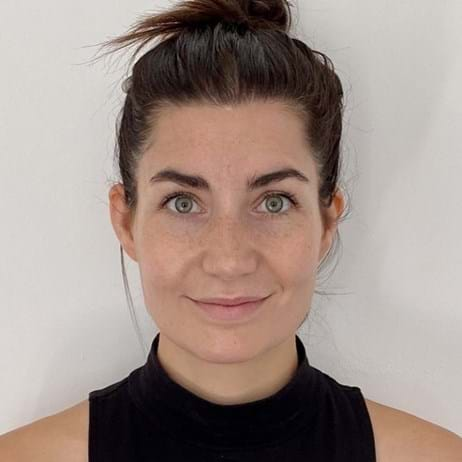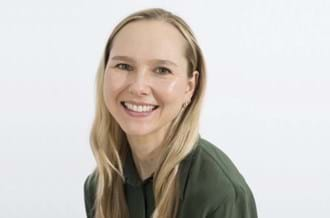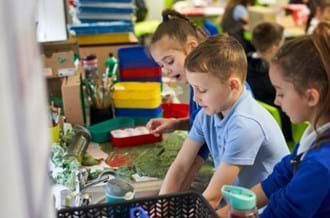Covid-19 and Children and Young People’s Mental Health: where are we now?
Covid-19 and Children and Young People’s Mental Health: where are we now?

Professor Tamsin Ford
Professor of Child and Adolescent Psychiatry at the University of Cambridge - Tamsin is Research Advisor at Place2Be. She is an internationally renowned Child Psychiatric Epidemiologist who researches the organisation, delivery, and effectiveness of services and interventions for children and young people’s mental health.

Lauren Cross
PhD student at the University of Cambridge - Formerly a qualified teacher, Lauren is currently undertaking a PhD at the University of Cambridge (MRC Epidemiology Unit). Lauren’s PhD explores who engages in school-based health prevention research and seeks to identify opportunities for inclusive participation.

Alex Hartley
Visiting Student at the University of Cambridge – Alex is an undergraduate Psychology student at the University of Bath, currently on placement as a Research Assistant at the University of Cambridge. Following on from his studies, he wishes to pursue a career in public health research, with a particular focus on male mental health.
In this guest article for Place2Be, Alex Hartley, Lauren Cross and Professor Tamsin Ford of the University of Cambridge reflect on the impact that Covid-19 has had on children and young people's mental health.
With lockdowns, school closures, separation from friends and online learning, navigating the pandemic has not been easy for children and young people. It is no surprise that this has taken its toll on their mental health, with the latest official figures suggesting that one in six children and young people are currently experiencing mental health difficulties.
NHS Digital have just released the report on the 2021 follow-up to the Mental Health of Children and Young People Survey. With data also collected in 2017 and 2020, this series captures both pre-pandemic and current experiences. This perspective helps build a picture of how children and young people’s mental health and wellbeing has changed during this time - a view which is desperately needed. Unfortunately, too much of our current understanding of mental health and Covid-19 relies on data without a ‘before’ the pandemic baseline to anchor children and young people’s mental health, or is drawn from a small or limited sample of people.
However, some caution is also needed with these figures. We cannot conclude from these data alone that any changes in mental health directly stem from the pandemic, particularly as potential risk factors, such as family functioning, are measured at the same time as mental health. But repeated associations of certain factors, such as age, gender, financial / food insecurity, offer suggestions about the factors which are challenging children and young people’s mental health during this time.
How is mental health changing?
The 2020 follow-up to the Mental Health of Children and Young People’s Survey revealed a concerning decline in children and young people’s mental health; with one in six (16%) 11-16-year-olds thought to have a probable mental disorder* compared to one in nine (11.6%) in 2017. Whilst this decline had stabilised in 2021 with one in six (17.4%) identified to have a probable mental disorder, rates remain worryingly high. What is meant by a probable mental disorder is that, if that participant was to visit a mental health practitioner, they would likely be diagnosed with a mental health disorder.
Of particular concern, are the increases in the proportion of children and young people with possible eating problems since 2017; with rates almost doubling from 6.7% to 13.0% in 11 to 16-year-olds, and increasing from 44.6% to 58.2% in 17 to 19-year-olds. We need to stress that eating difficulties were highlighted by reporting two out of five possible problems with eating and that these figures do not describe eating disorders such as anorexia or bulimia. The factors driving these increases need to be better understood, but given the increase in referral numbers to CAMHS seen throughout the pandemic, these statistics emphasise a need for urgent investment within support structures and services.
Covid-19, restrictions and challenges for mental health
Not all children and young people were affected equally by the pandemic. Indeed, some children and young people reported restrictions made life better (21.2% of 11 to 16-year-olds but only 2.3% 17 to 23-year-olds), although a significant minority reported restrictions had made their life much worse (13.5% of children and 23.9% of 17 to 23-year-olds).
However, those with poorer mental health appeared to be particularly vulnerable and more likely to have experienced adverse effects from restrictions. For example, over a quarter (26.9%) of children with a probable mental disorder said restrictions had made their lives much worse, compared with one in ten children unlikely to have a mental disorder (9.7%).
Further, those with probable mental disorders are more likely to have experienced higher levels of loneliness, lower quality of sleep, and live in a home with poor family connectedness and/or experiencing financial strain.
During the pandemic, those with probable mental health disorders were also more likely to be absent from school, but less likely to have access to resources necessary to engage in remote learning. They were also less likely to report receiving regular support from school and indicated they had lower motivation to learn from home. This means that those with poorer mental health during the pandemic, are also most vulnerable to falling behind with their learning. Another group that may have been particularly affected are children with Special Educational Needs and Disabilities (SEND). Almost half (46.2%) of parents of 6-16-year-olds with SEND reported that they received a reduction in support for their child as a result of the pandemic. That said, some progress does appear to have been made in the right direction, as the proportion of parents reporting their child had received regular support from their school/college had improved for all children between 2020 and 2021; increasing from 73.7% (2020) to 79.9% (2021). Therefore, schools appeared to be increasingly able to put support structures in place (but not for everyone).
What needs to happen next?
We must ensure that all practitioners working with children and young people have sufficient training and resources to identify children and young people with mental health disorders that warrant intervention. Improved identification must lead to prompt access to evidence-based interventions. Yet what we see is a workforce crisis in child and adolescent mental health services (CAMHS). Despite offering more appointments this year than last, CAMHS are swamped by increasing referrals with shockingly long waiting lists. The close partnership between CAMHS and the third sector offers a solution, but we need to ensure that children are not left without provision with difficulties that are deemed too severe or complex for the third sector but “below threshold” for CAMHS.
Additionally, Personal, Social, Health and Economic education offers opportunities to learn important life skills that may protect mental health, such as emotional regulation, problem-solving, and conflict resolution. But we also need to address the broader structural factors that undermine mental health, such as active treatment for parents with poor mental health, sufficient provision of support for children with special educational needs and reducing the numbers of families who face food or financial insecurity.
News & blogs

Uniting health and schools to improve mental health
Read Place2Be Chief Executive, Catherine Roche's, thoughts on uniting health and schools to improve mental health.
Read more
Bukhman Philanthropies Partners with Place2Be to Support Children and Young People’s Mental Health
Read about Bukhman Philanthropies' partnership with Place2Be to support Children and Young People’s Mental Health
Read more
Royal Foundation Centre for Early Childhood Funds Innovative Mental Health Pilot
The Royal Foundation Centre for Early Childhood is funding an innovative new pilot with Barnardo’s and Place2Be.
Read more



